Are you tired of sending the same old sales prospecting emails and not getting any responses? Well, you’re in luck! In this blog post, we’re going to share some new, fresh and effective sales prospecting email templates for both B2B and B2C businesses.
Even better, But that’s not all, we’re also going to talk about a game-changing software that has made targeted sales prospecting possible for B2C businesses. Yes, you read that right! B2C businesses are no longer stuck in the land of donkeys, wistfully dreaming they could join the land of unicorns with their B2B counterparts.
The same type of database-driven prospecting that was once only available to B2B businesses is now accessible to B2C businesses too.
Before we get to that, let’s make sure we’re on the same page.
- What exactly is sales prospecting?
- What makes a good sales prospecting email template?
- Who do sales prospecting email templates make sense for?
- B2C Sales Prospecting Email Templates
- B2B Sales Prospecting Email Templates
What exactly is sales prospecting?
Think of it as detective work, but with less trench coats and more email templates. Sales prospecting is all about finding the right people who have a need for what you’re selling and are willing to pay for it. It involves researching and qualifying potential leads, reaching out to them, and persuading them to take action.
The key: understand your target audience and their pain points. You need to be able to communicate your value proposition in a way that resonates with them and offers a solution to their problems.
It’s not just about selling a product or service; it’s about building relationships and creating trust.
So, get ready to put on your detective hat and start prospecting. With the right mindset, a bit of creativity, and some solid email templates, you can find the treasure trove of potential customers that will help grow your business.
What makes a good sales prospecting email template?
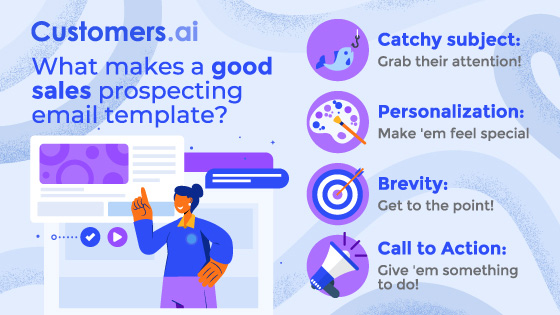
Here are a some things you have to include in all your sales prospecting emails!
- Catchy Subject
- It has to be attention grabbing! This isn’t just about making big promises. People are more likely to open emails that seem sent specifically to them!
- Personalization
- Show that you care by addressing your prospect by name. Throw in a personalized touch or two. This will go a long way towards endearing them to you!
- Clarity
- Make what you’re selling crystal clear! Don’t beat around the bush. You have something you think they want. You want them to know what it is! They have to know what it is to want it!
- Brevity
- Get! To! The! Point! Nobody has time to read a novel. Your prospects have lots of other emails, texts, tweets, etc to attend to. Every second counts.
- Relevance
- Demonstrate that you did your research. Establish why what you’re offering is good for them. Establish why you’re reaching out now as opposed to two months ago or two months from now.
- Credibility
- Why should they work with you? Case studies, testimonials, customer reviews, documented success. Anybody can send an email! You have to prove you’re legit.
- Professionalism
- Your email should be classy and free from typos. This doesn’t mean you shouldn’t let your personality shine through! Nobody wants to read another boring email. It can be a tough line to walk but you can do it!
- Call to Action
- Give your prospect something to actually do! Schedule time with you, sign-up for a consultation, whatever it is. Make sure there’s an action they can take!
Who do targeted Sales Prospecting Email Templates make sense for?
Formerly, targeted sales prospect emailing was only really possible for B2B salespeople. They had so much more information about their prospects like their industry, company size, and pain points.
But B2C companies were stuck with expensive and inefficient solutions like direct mail campaigns.
Social media seemed like it was the solution until privacy restrictions made the targeting so much worse.
With MobileMonkey’s X-Ray technology, B2C companies can now get the contact information of 1 in 5 people who visit their website! With this information, you can turn casual browsers into loyal customers.
To write great Sales prospecting emails, set up your automation to target users who visit specific pages on your website. This will let you know they’re interested in one of your products or services in particular.
Then you can dazzle them with emails that perfectly match what they’re considering!
Plus, setting up couldn’t be easier! Here’s how:
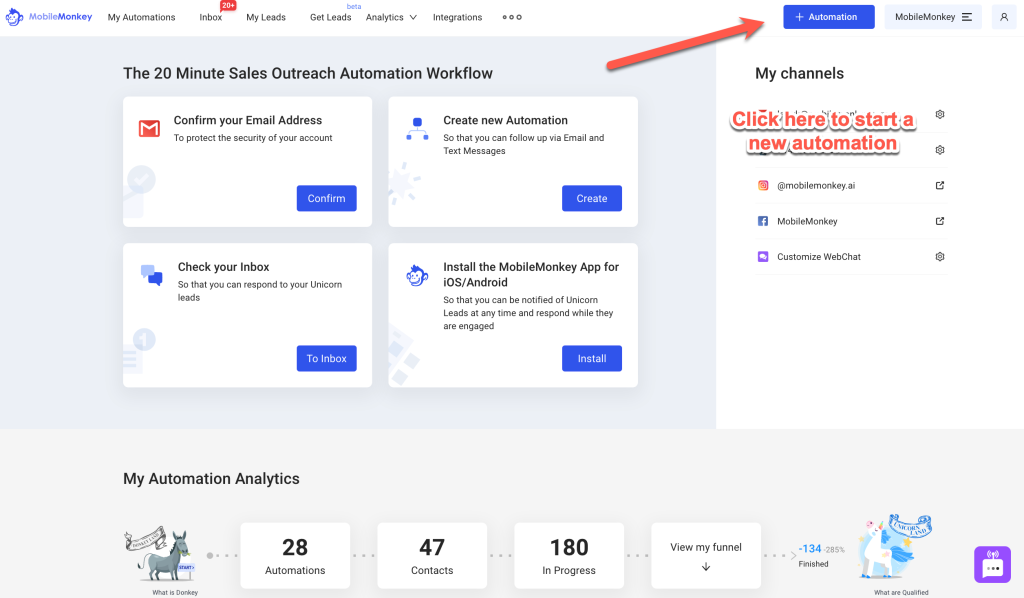
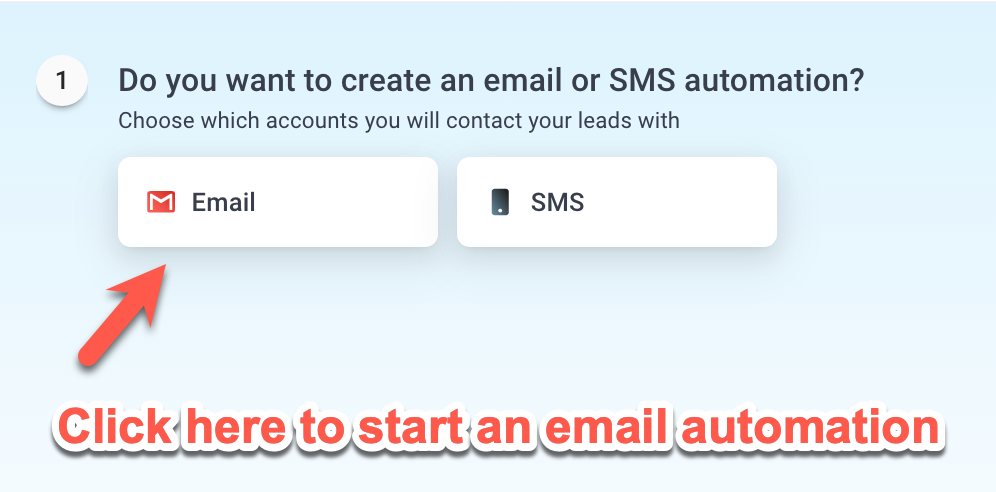
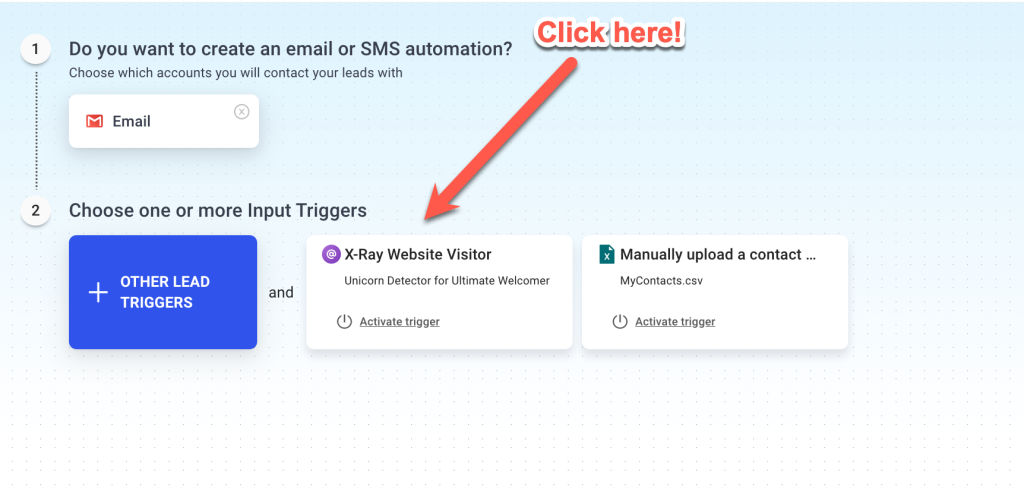

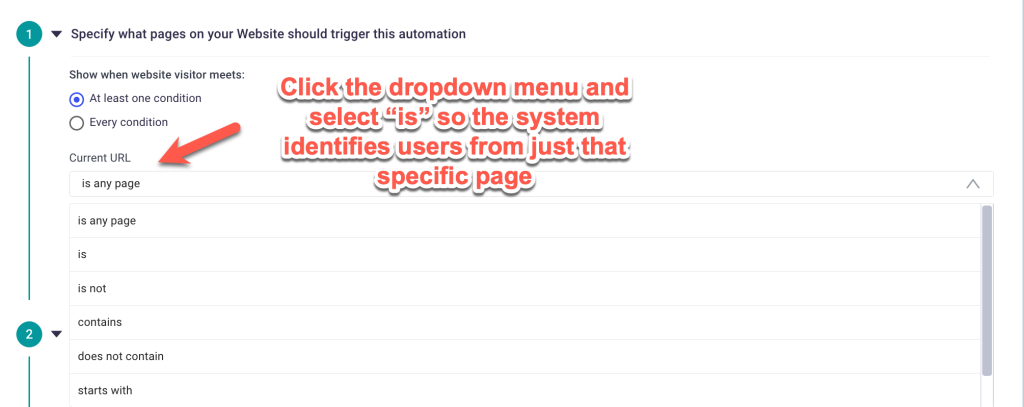
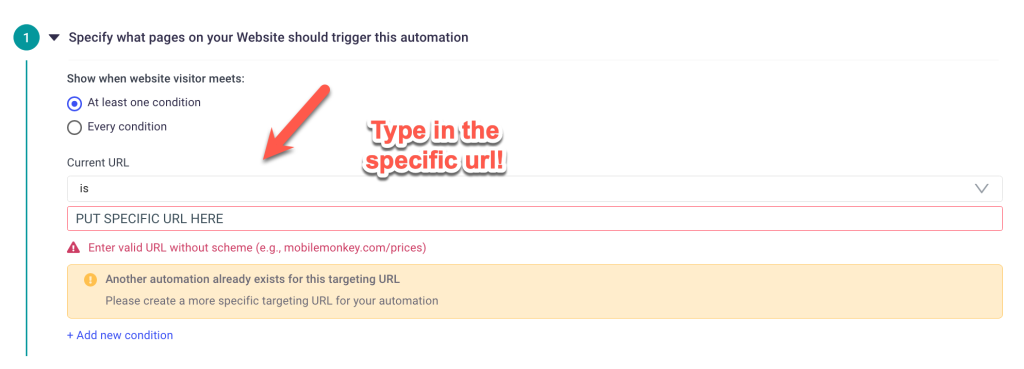
B2C Sales Prospecting Email Templates
So you’ve set up your targeting criteria. Now what?
Use that information to write emails that are targeted and personalized.
Firstly, they demonstrate that you know the prospect and their needs. But that’s not all.
They also demonstrate why they should buy from you and not just anyone.
For example, here’s an email automation sequence sent by a real estate agent in East Lansing, Michigan.
They ran a Facebook ad targeting University of Michigan fans living in East Lansing who were interested in energy-efficient homes. Now they’re reeling them in!
Sales Prospecting Email Templates for a Real Estate Agent
Cold Email
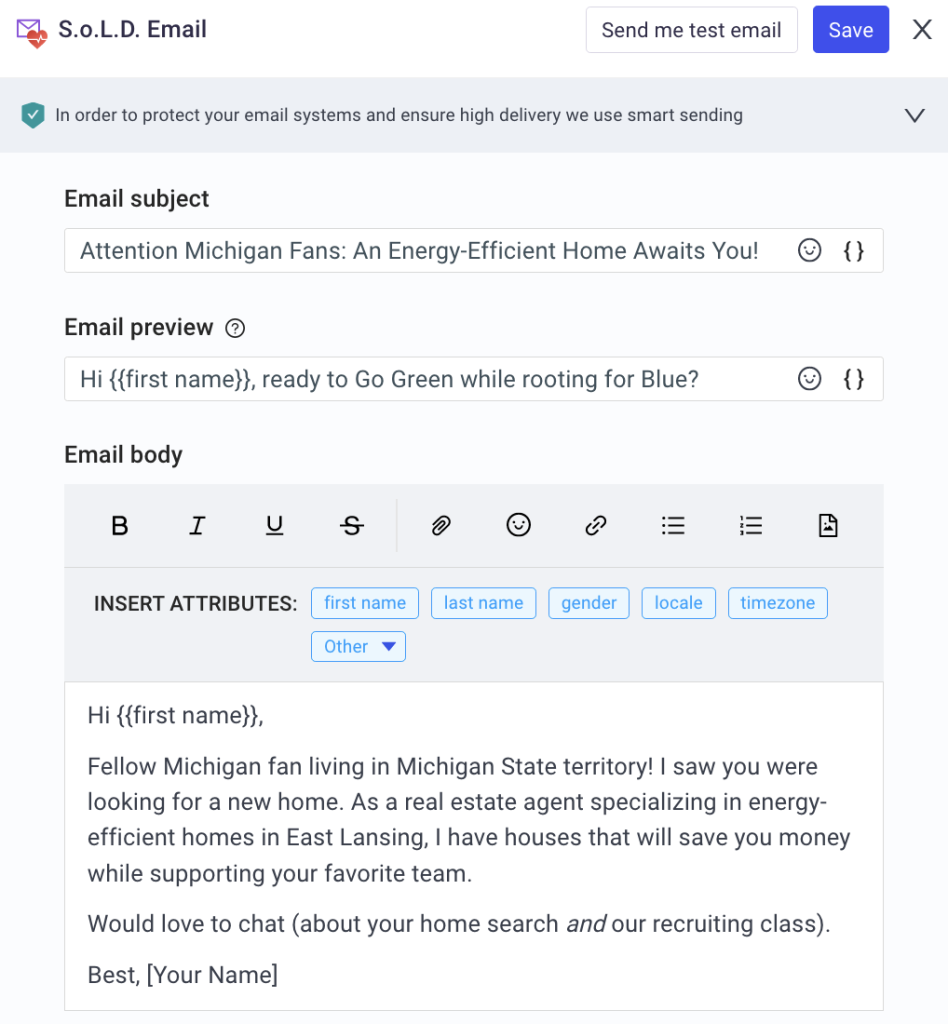
Follow-up #1
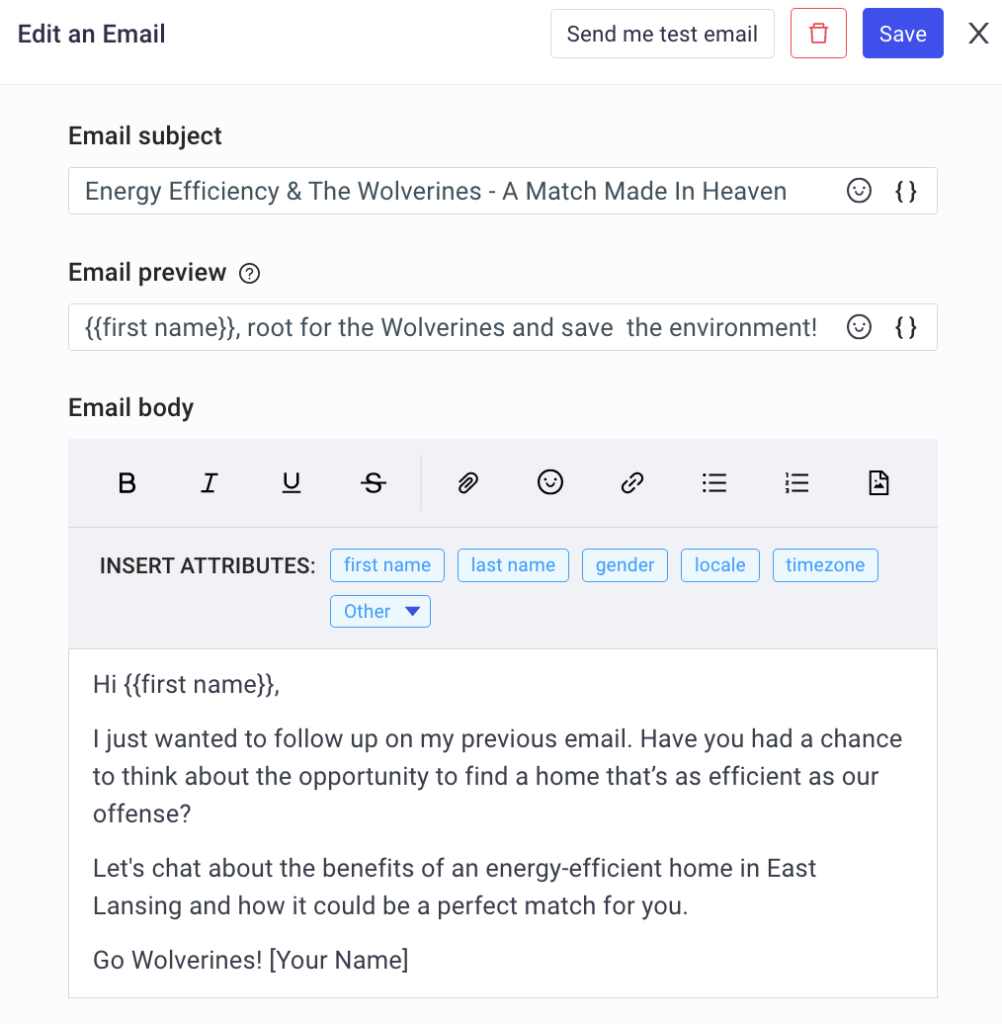
Follow-up #2
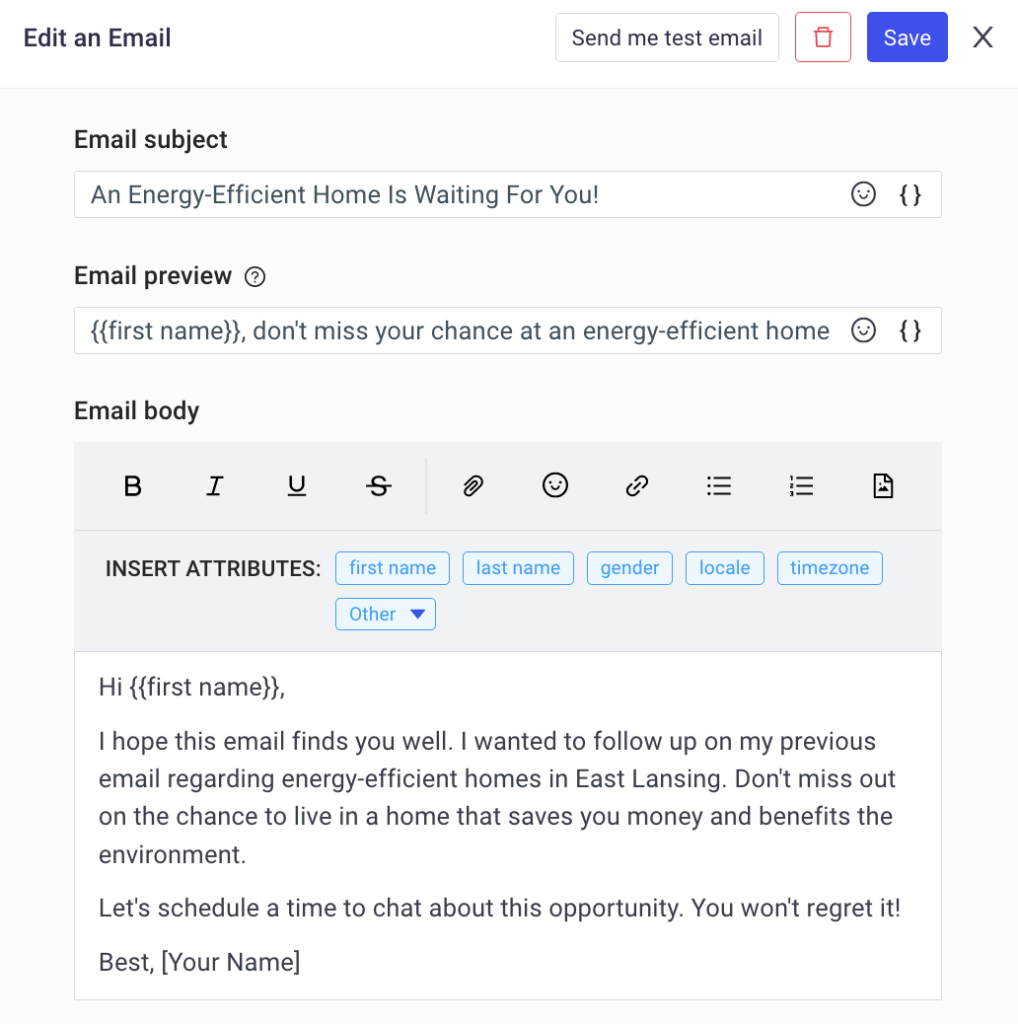
Pre-breakup
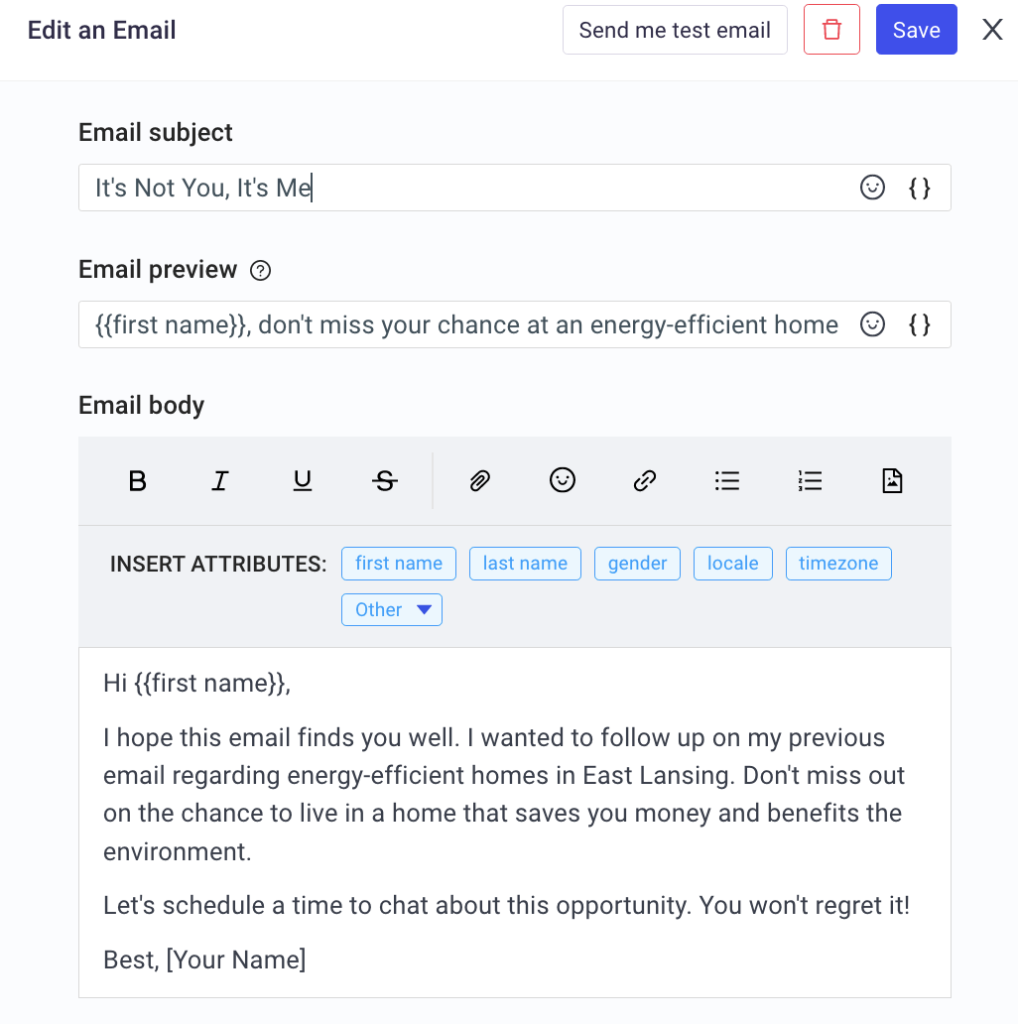
Re-engagement
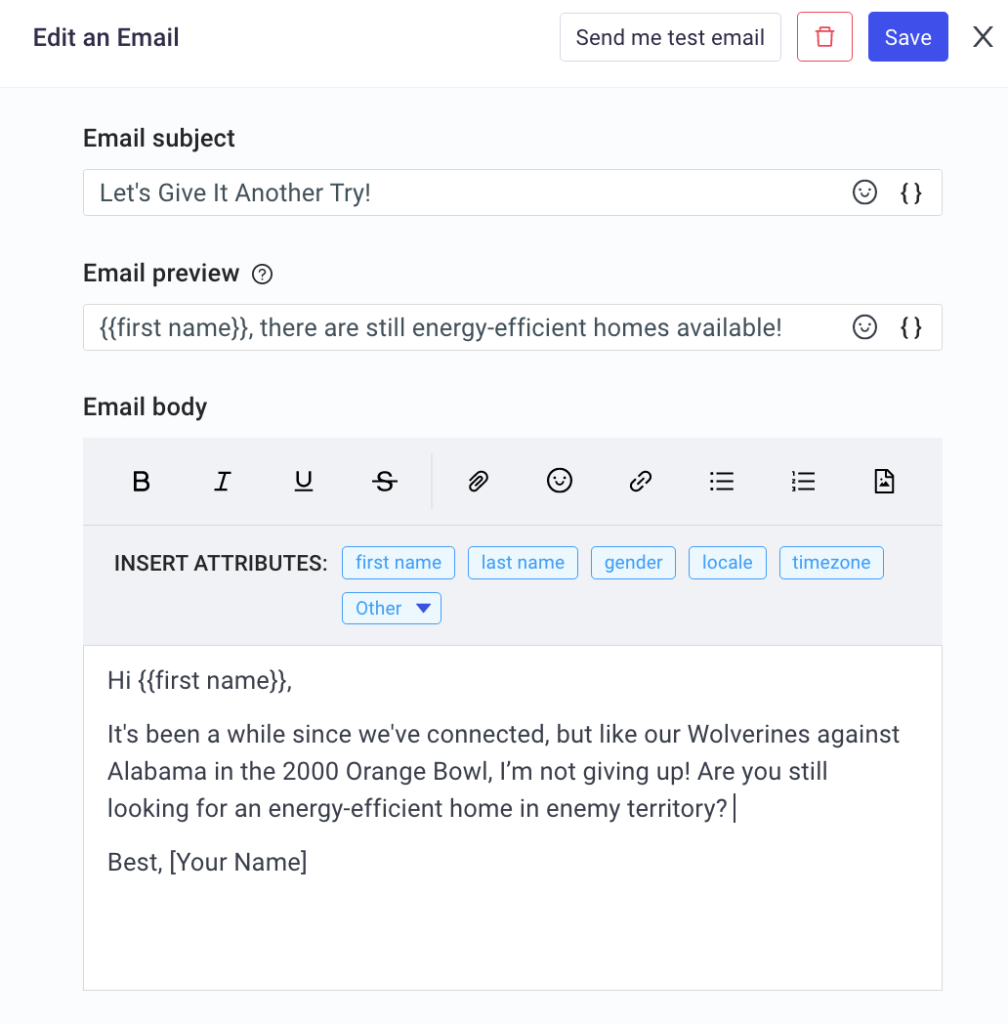
Sales Prospecting Email Templates for a Financial Advisor
Here’s another example for a sales prospecting campaign by a financial advisor in Austin, Texas. They’re targeting the influx of tech workers by emphasizing their local knowledge.
Cold email
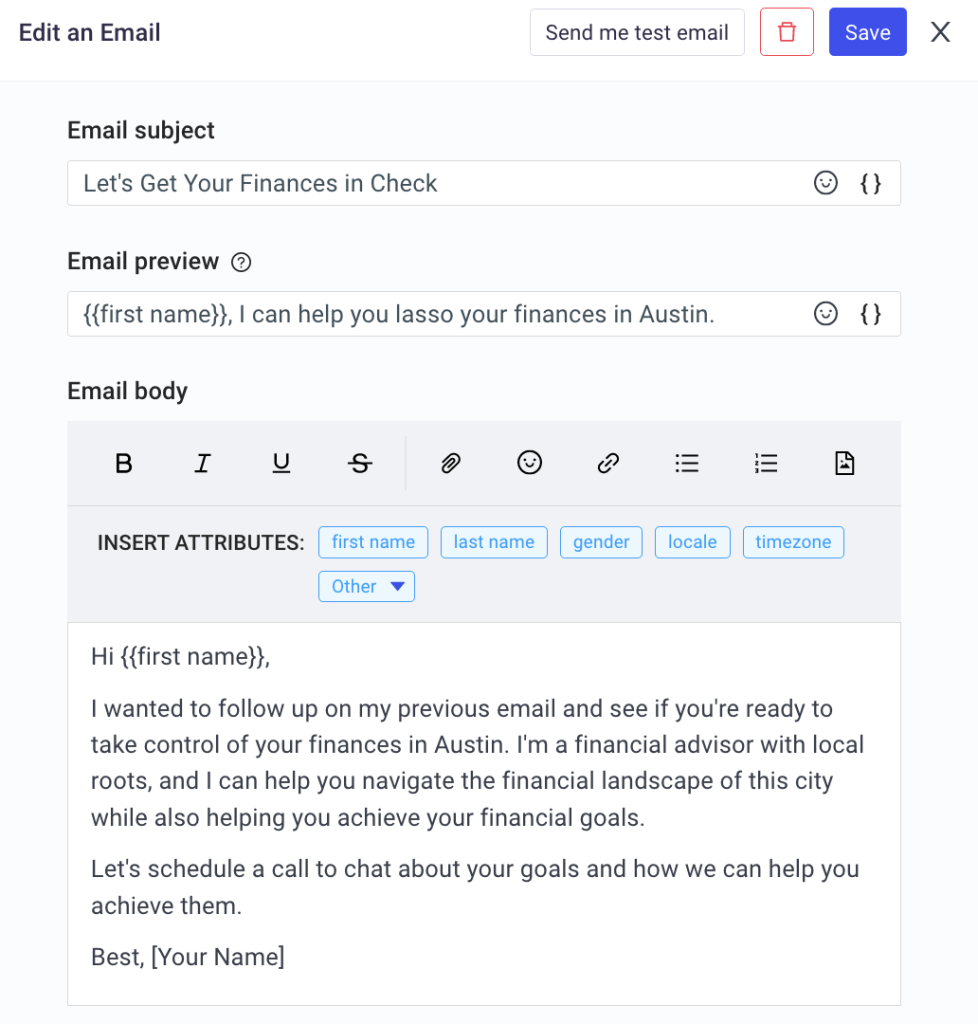
Follow-up #1
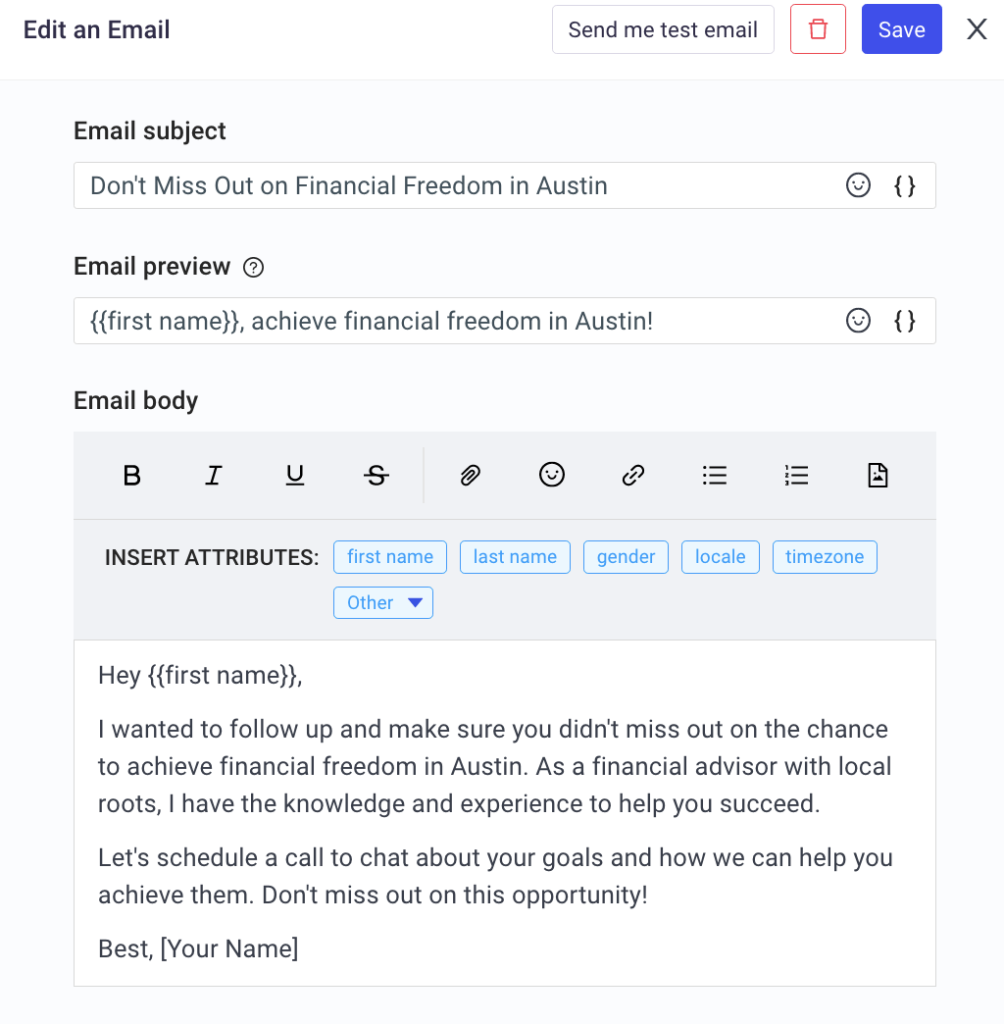
Follow-up #2
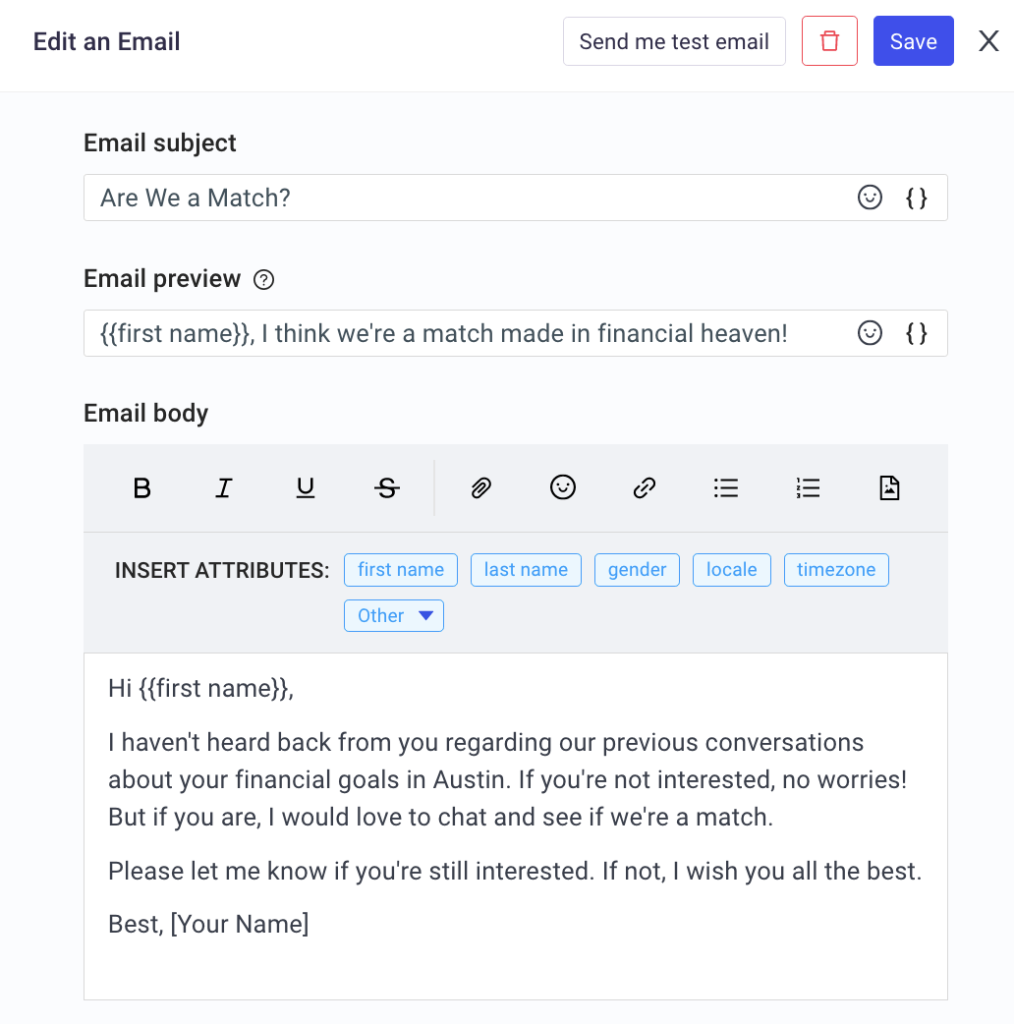
Pre-breakup
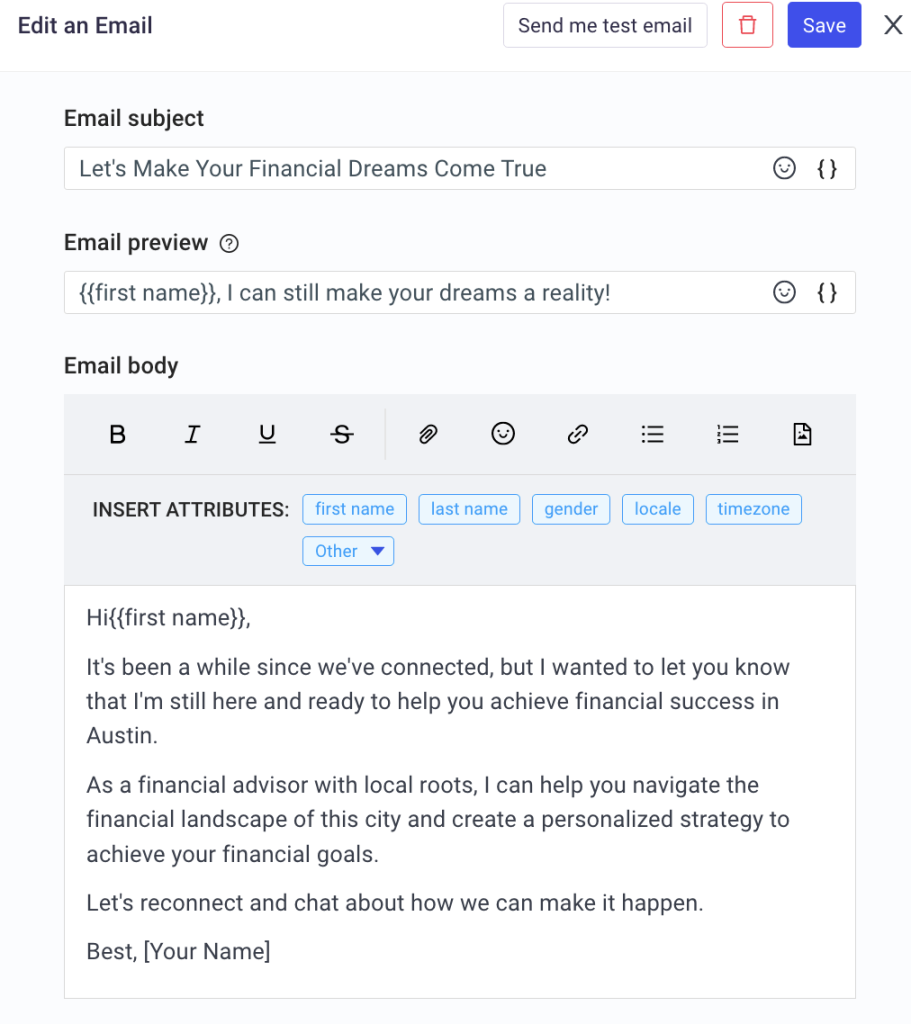
These are easy to transform for your business!
You already know your target customer and you know what makes you special. Therefore, you already know how to write a great sales prospecting email. Just plug those nouns in and you’re ready to go.
B2B Sales Prospecting Email Templates
Just like with B2C Sales Prospecting Email Templates, B2B emails need to be personalized and targeted!
Different businesses communicate in different ways. Here are cold email templates written for different styles!
Even if these don’t fit perfectly you can use them to make your writing process less Donkey and more Unicorn!
Funny Sales Prospecting Email Templates
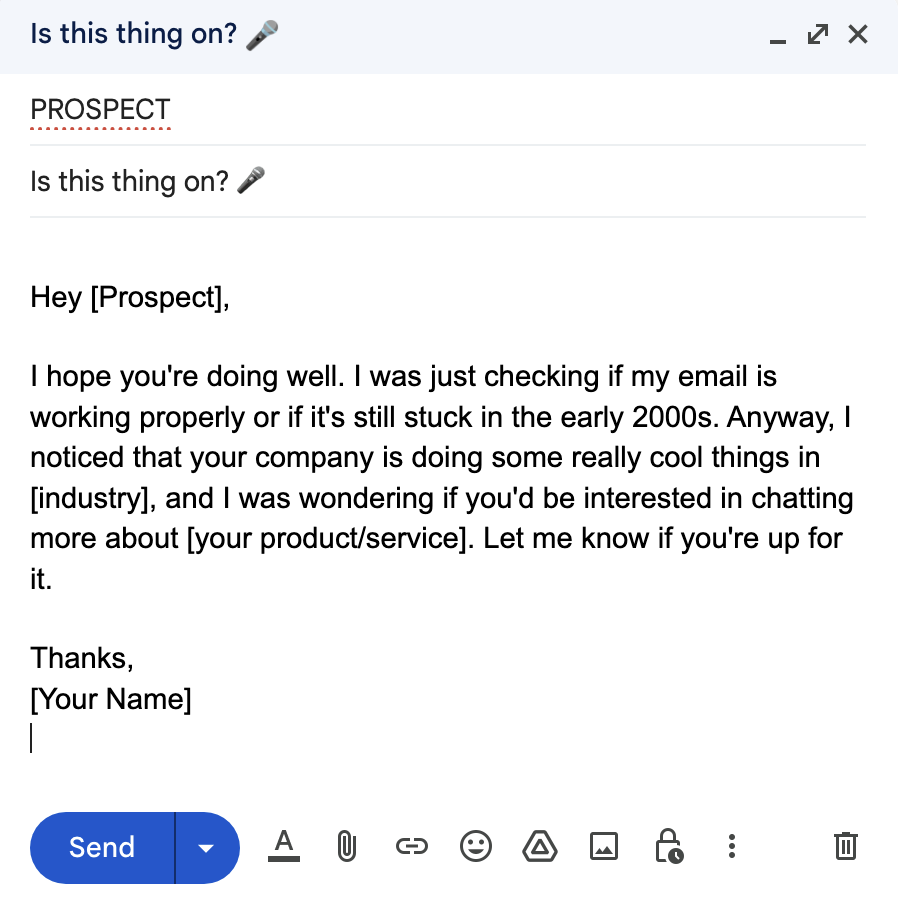
Silly Sales Prospecting Email Template

Professional Sales Prospecting Email Templates
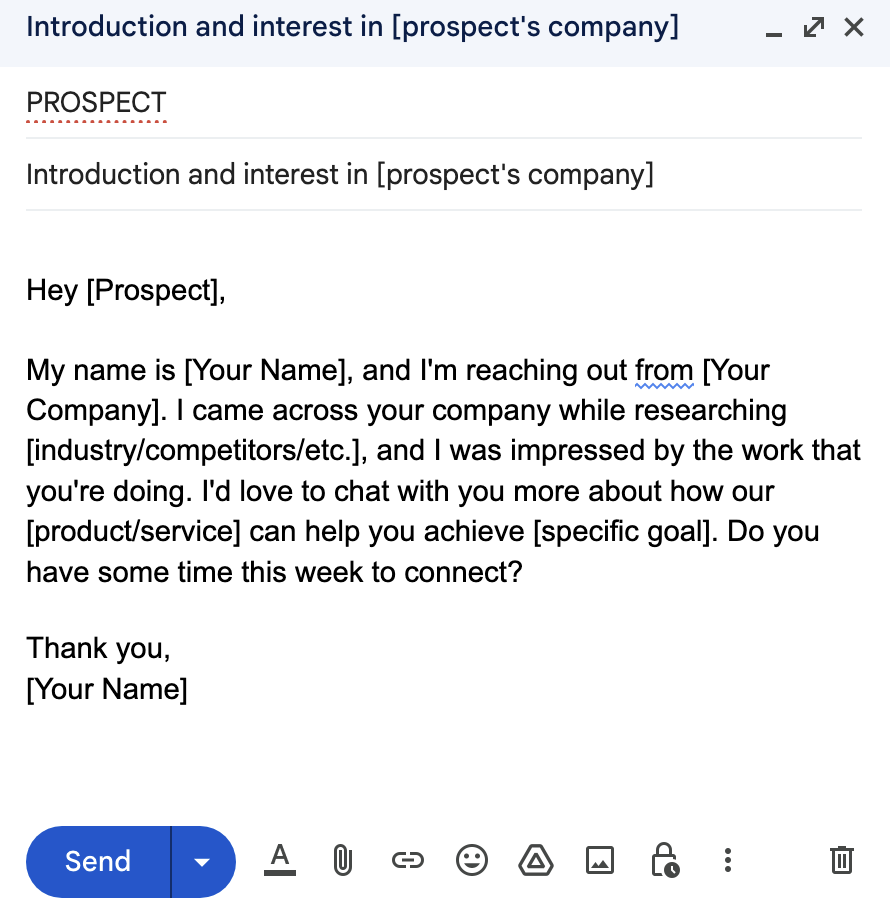
Chatty Sales Prospecting Email Template
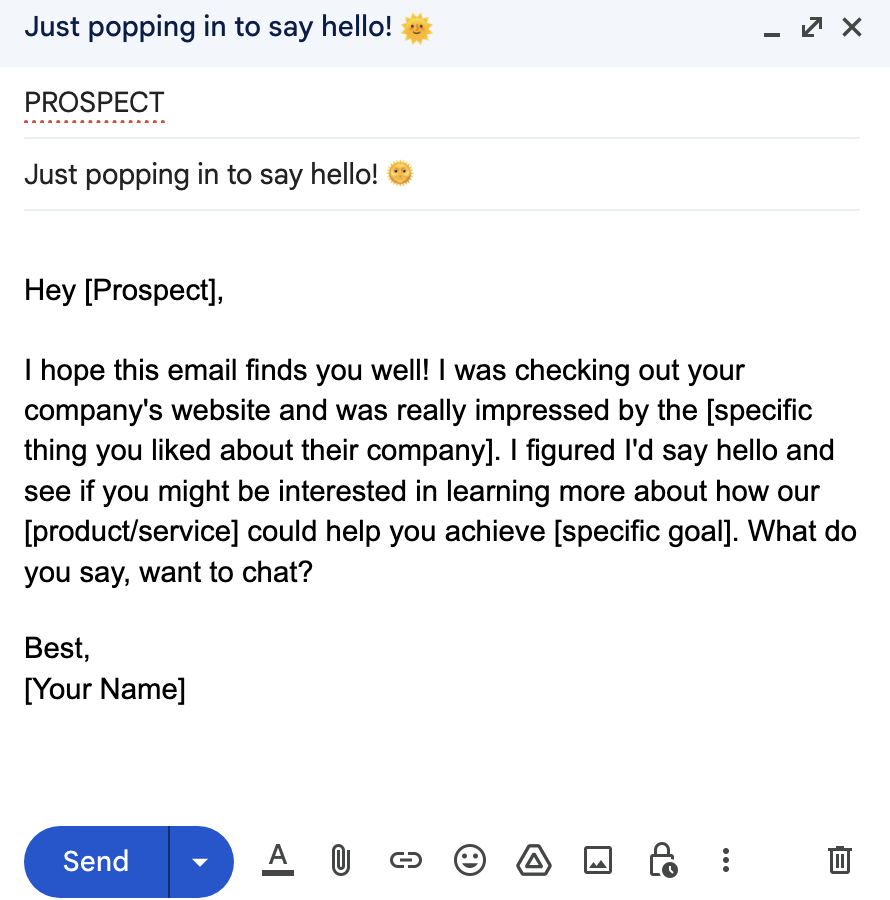
Very Professional Sales Prospecting Email Template
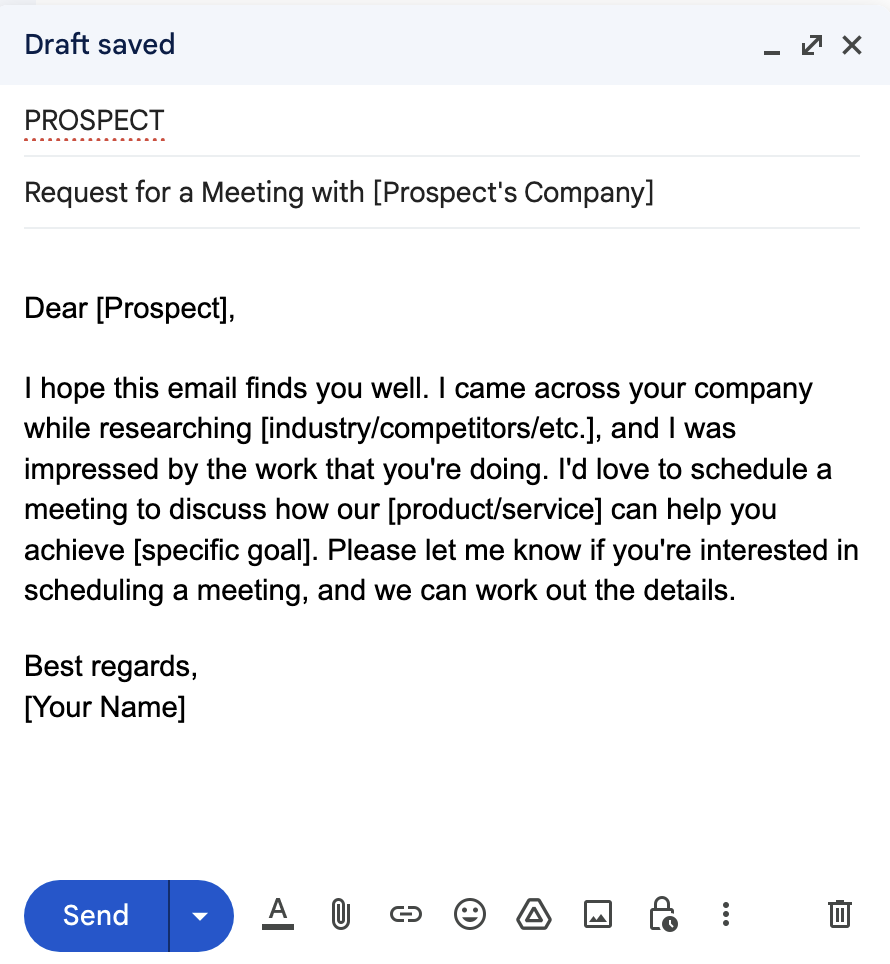
Your B2B sales prospecting emails may also be prompted by a variety of different events. These include not only corporate communications but also social media posts. Here are templates for turning those events into leads!
If a LinkedIn Post Prompts your Email:
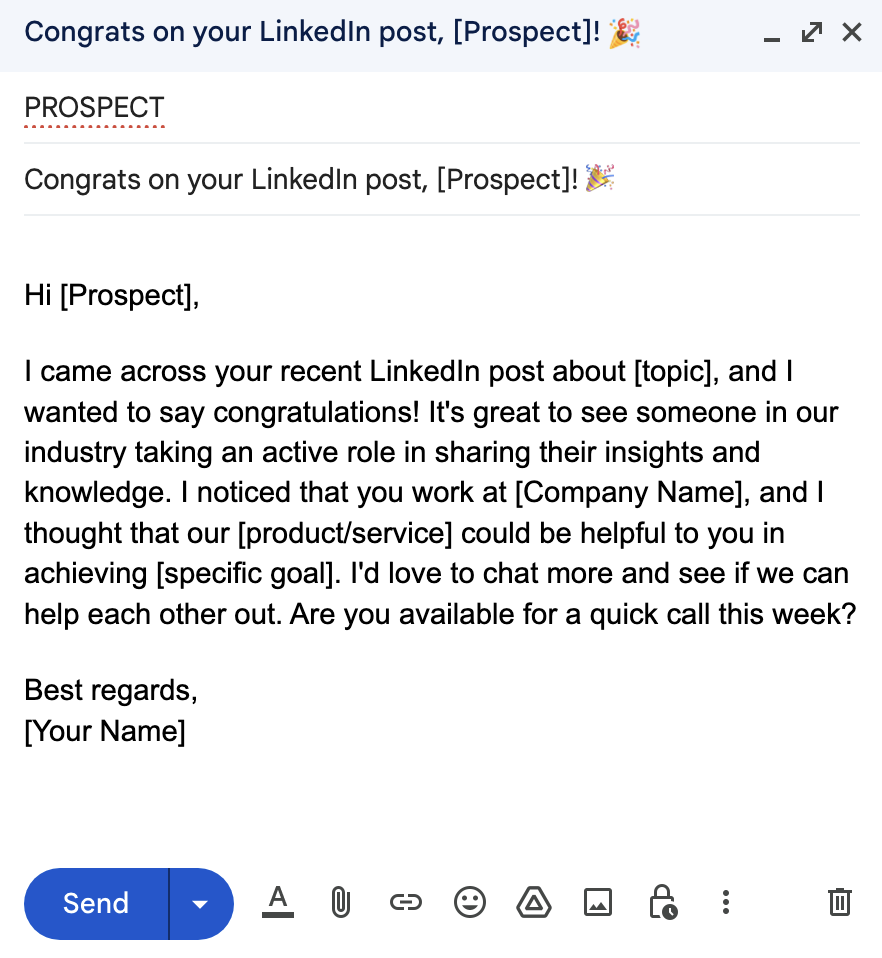
Perhaps a Press Release Prompted You to Send:
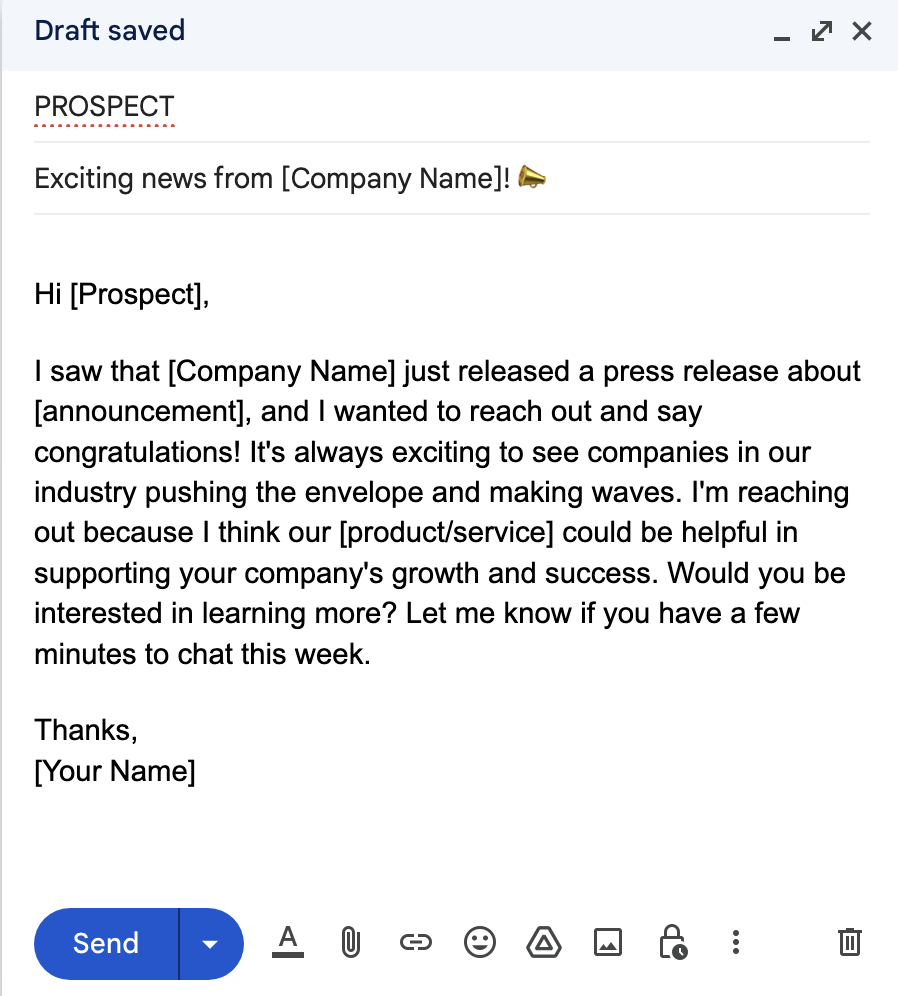
Email Triggered by an Internal Tracking Tool
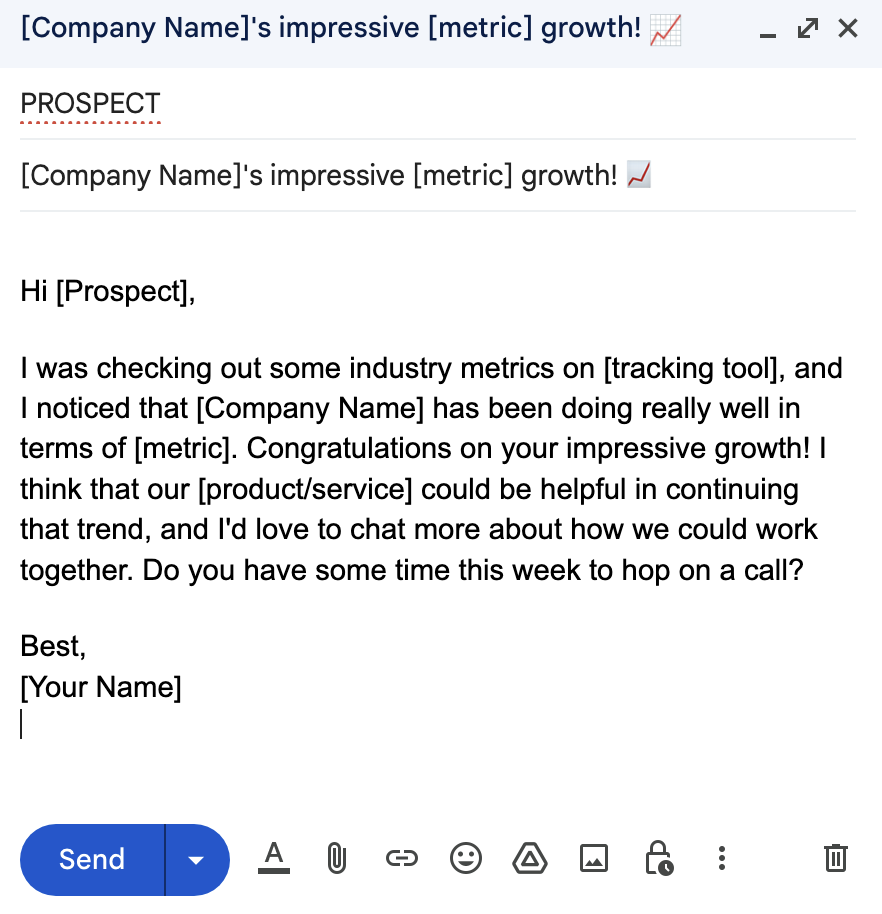
Maybe a Facebook post triggered the email:
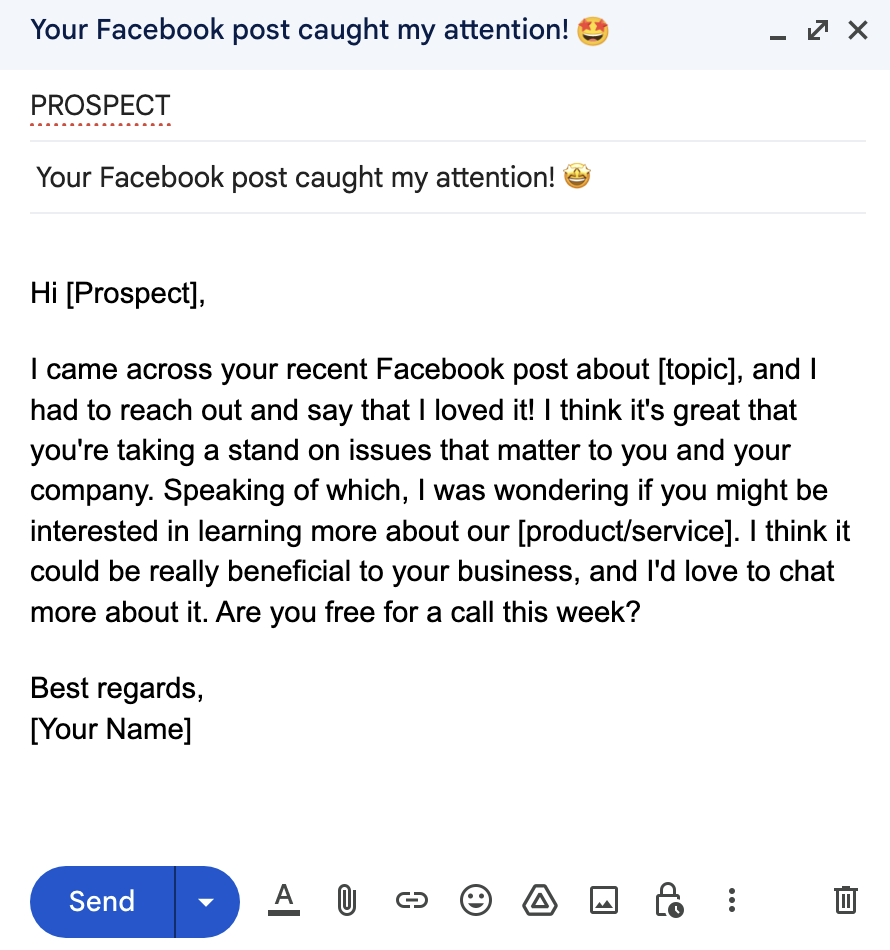
If the prospect was recently promoted:
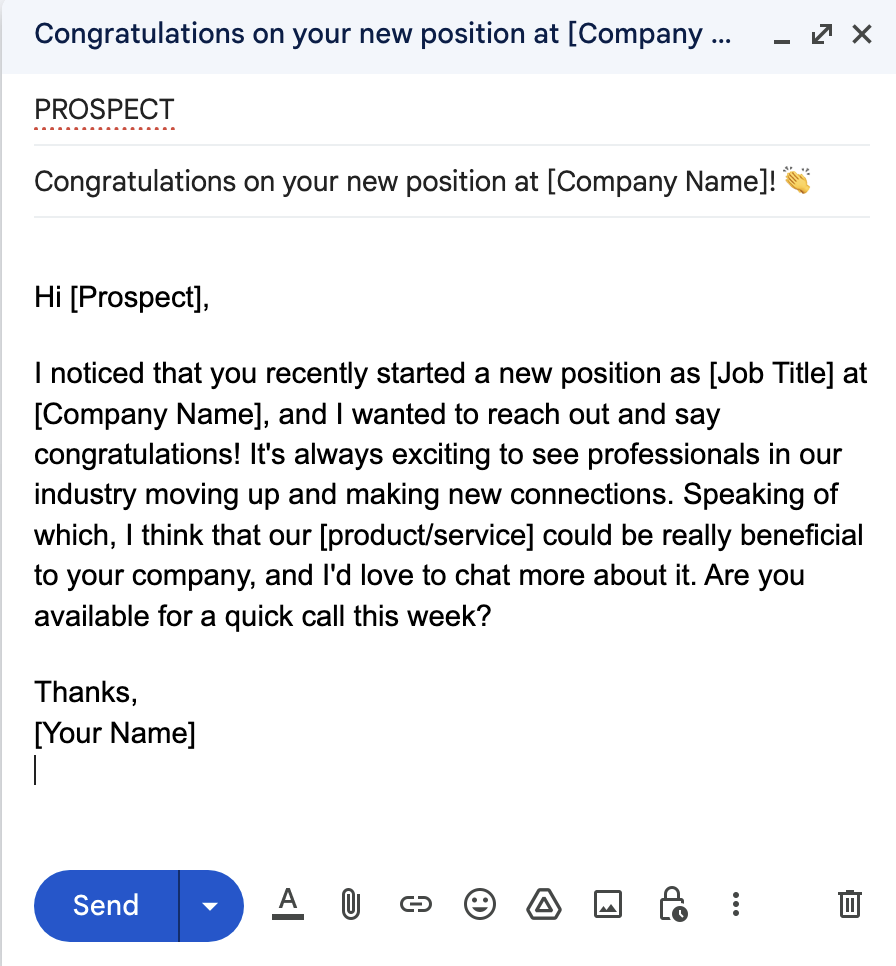
Conclusion
Previously, B2C businesses lacked access to the tools B2B businesses have been using to thrive.
Because of Customers.ai’s powerful tools, they can finally harness the power of Sales Prospecting Email Templates for their prospecting!
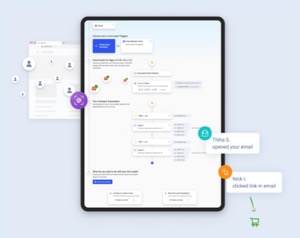
See Who Is On Your Site Right Now!
Get names, emails, phone numbers & more.
Try it Free, No Credit Card Required
Important Next Steps
- See what targeted outbound marketing is all about. Capture and engage your first 500 website visitor leads with Customers.ai X-Ray website visitor identification for free.
- Talk and learn about sales outreach automation with other growth enthusiasts. Join Customers.ai Island, our Facebook group of 40K marketers and entrepreneurs who are ready to support you.
- Advance your marketing performance with Sales Outreach School, a free tutorial and training area for sales pros and marketers.
Sales Prospecting Template FAQs
What is a sales prospecting email?
A sales prospecting email is a targeted message sent to potential customers with the aim of initiating a sales conversation, building a relationship, and moving the recipient closer to a purchase decision. It focuses on sparking interest and providing value.
Why are sales prospecting emails important?
Sales prospecting emails are crucial for reaching new leads, expanding customer pipelines, and generating new opportunities. Well-crafted emails help establish rapport, demonstrate value, and guide potential customers toward further engagement.
What makes a good sales prospecting email template?
A good sales prospecting email template is clear, concise, and personalized. It includes a compelling subject line, addresses the recipient’s pain points, offers value, and includes a clear call-to-action, making it easy for prospects to respond.
How can I write an effective sales prospecting email?
To write an effective email, start with a strong subject line, personalize the message, focus on the recipient’s needs, keep the content concise, and end with a clear call-to-action. Testing and refining based on responses also improve effectiveness.
What should be included in a sales prospecting email?
Key elements include a personalized greeting, an engaging opening, a clear value proposition, a brief explanation of your product or service, social proof if applicable, and a call-to-action to encourage next steps.
How do you write a compelling subject line for a prospecting email?
A compelling subject line is specific, personalized, and relevant to the recipient. Use curiosity, highlight a pain point, or offer a benefit to entice the recipient to open the email. Examples include “Quick idea to improve your [specific goal]” or “Struggling with [pain point]? Here’s some help.”
How long should a sales prospecting email be?
Sales prospecting emails should be brief, typically around 50-125 words. The goal is to provide enough information to spark interest without overwhelming the reader. Keeping it short makes it more likely to be read and responded to.
How can I personalize a sales prospecting email?
Personalize by mentioning the recipient’s name, company, or industry and referring to specific challenges they may face. Researching the recipient’s background or company details helps tailor the message to their unique needs.
What are common mistakes to avoid in prospecting emails?
Avoid sending overly long messages, using generic language, failing to personalize, focusing too much on your product rather than the prospect’s needs, and including multiple calls-to-action, which can dilute the message.
How can I improve the response rate for my prospecting emails?
To improve response rates, keep emails short, personalize them to address specific needs, use a friendly but professional tone, provide value up-front, and ensure a single, clear call-to-action that makes it easy to respond.
What is the best time to send a sales prospecting email?
Generally, weekday mornings (Tuesday through Thursday) between 8 AM and 10 AM or early afternoons (1 PM to 3 PM) tend to have higher open rates, as recipients are more likely to check their inboxes during these times.
How many follow-up emails should I send in a sales sequence?
Typically, 2-3 follow-up emails are ideal. Send follow-ups at spaced intervals (3-7 days apart) to stay on the recipient’s radar without overwhelming them. Each follow-up should offer new value or insight, not simply repeat the initial message.
What are some effective opening lines for prospecting emails?
Effective opening lines can reference the prospect’s work, mention a recent accomplishment, or highlight a shared connection. Examples include “I noticed your recent work on [project]…” or “We share a common goal of improving [specific area].”
Should I include links in my prospecting email?
Including one link can be effective if it adds value, such as a link to a helpful resource or product demo. Avoid too many links, as it can seem spammy. Make sure the link is relevant and complements the email’s message.
How important is the call-to-action in a prospecting email?
The call-to-action (CTA) is critical as it guides the prospect on what to do next. A good CTA is clear and direct, such as “Let’s schedule a call” or “Would you like to learn more about [product]?” It should be easy for the prospect to follow through.
How do you close a prospecting email?
Close with a friendly and professional statement, reaffirming your interest in helping the prospect. For example, “Looking forward to connecting soon!” or “I’m here to help if you have any questions.” Finish with a clear CTA to encourage a response.
What are some effective sales prospecting email templates?
Effective templates include introductory emails that explain your service, problem-solving emails that address specific pain points, value-offer emails with free resources, and follow-up emails for prospects who haven’t responded initially.
How can I avoid sounding too “salesy” in my prospecting emails?
To avoid sounding “salesy,” focus on the prospect’s needs rather than your product. Use a conversational tone, avoid jargon, and highlight how you can solve their problems rather than pushing for an immediate sale.
What’s the best way to follow up after no response?
In follow-ups, gently remind the prospect of your previous email and provide additional value, such as a relevant case study or insight. Show understanding and respect for their time, and keep follow-ups polite and low-pressure.
How can I build credibility in a prospecting email?
Build credibility by mentioning relevant clients, case studies, or any mutual connections. Including a small piece of social proof, such as a brief testimonial or result, can reassure the prospect of your expertise.
How often should I send prospecting emails to the same prospect?
Aim to space prospecting emails to the same person 3-7 days apart, with no more than 3-5 emails in total. After that, it may be best to pause outreach and revisit at a later date if there’s no response.
What are some good subject lines for sales prospecting emails?
Strong subject lines are concise, personalized, and relevant to the prospect’s needs. Examples include “Quick question about [prospect’s business]” or “Struggling with [problem]? Here’s a new approach.”
How can I write prospecting emails for cold leads?
For cold leads, focus on introducing yourself briefly, mentioning a potential benefit or solution to their needs, and keeping the email very short. Since they may not be familiar with you, emphasize value and respect their time.
Should I use humor in my sales prospecting emails?
Humor can be effective if it’s appropriate for the industry and prospect. Light, friendly humor can make an email feel more personable and memorable, but avoid sarcasm or anything that could be misunderstood.
What metrics should I track for prospecting email success?
Track metrics like open rates, click-through rates, reply rates, and conversion rates. Monitoring these helps you understand which emails perform well, allowing you to optimize subject lines, content, and timing for better results.
